Introduction
Scroll through Instagram, TikTok, or even the image results on Google, and you’ll notice something curious. The pictures don’t feel random. They seem to echo one another, as if someone has carefully arranged them into a sequence. The colours harmonise, the subjects repeat, and the rhythm of images feels deliberate. Yet there is no human curator behind this arrangement. Instead, what you are seeing is the work of algorithms – mathematical systems that decide what rises to the surface and what sinks without trace.
This shift matters. For centuries, curation was a human act. A curator didn’t just select works of art; they told a story, created connections, and invited audiences to see things in a particular light. The Tate defines a curator as “someone who selects and organises works of art for public display” (Tate). That definition implies intention, judgement, and a sense of responsibility. Algorithms, by contrast, don’t interpret. They sort. They measure clicks, likes, and watch‑time, and then serve up more of the same.
The result is that our experience of photographic art—whether we are artists, collectors, or casual viewers—is increasingly shaped by invisible systems of code. For many, this is liberating. A photographer in Nairobi or Naples can find an audience in New York without ever stepping into a gallery. Work that might once have been ignored by institutions can now circulate globally. The algorithm, in this view, is a great leveller.
But there is another side to the story. Algorithms are not neutral. They are designed to maximise engagement, which often means privileging certain kinds of images over others. Bright colours, faces, and immediate impact tend to perform well. Subtlety, slowness, and ambiguity often do not. This can create a narrowing of vision, where artists feel pressured to adapt their practice to “please the feed”. In this sense, the algorithm is less a curator and more a manipulator, shaping culture not through insight but through metrics.
The stakes are high because photography has always been bound up with questions of visibility. Who gets seen, and who does not, has long been a matter of power. In the past, that power was held by editors, curators, and critics. Today, it is increasingly held by platforms. Instagram users alone post more than 1.3 billion images every day. No human could possibly curate such a flood. Algorithms step in to make it navigable—but in doing so, they also decide what counts as visible.
This raises a series of questions that will guide the rest of this essay. Can we really call algorithms curators, or are they something else entirely? If they are curators, what kind of curators are they—democratic, biased, blind, or all three at once? And if they are not curators, then what word should we use to describe their role in shaping our visual culture?
The answers are not straightforward. Some will argue that algorithms have opened up the art world, giving voice to those who were previously excluded. Others will insist that algorithms flatten difference, rewarding sameness and punishing risk. Still others will suggest that the problem lies not in the algorithms themselves, but in our tendency to mistake their sorting for curation.
What is clear is that the algorithm has become a central player in the story of photographic art. Whether we embrace it, resist it, or try to reframe it, we cannot ignore it. The challenge is to understand what it is doing, how it is doing it, and what that means for the future of images.
This essay will explore the debate from all sides. We will look at the traditional role of the curator, the rise of algorithmic feeds, the arguments for and against treating algorithms as curators, and the philosophical questions that follow. The aim is not to deliver a final verdict, but to open a conversation. By the end, you may find yourself leaning one way or another—but the point is to think critically about the systems that shape what we see, and to ask whether we are comfortable letting them play such a powerful role.
The Traditional Role of the Curator
Before we can decide whether algorithms deserve the title of “curator”, it’s worth pausing to ask what curation has traditionally involved. The word itself comes from the Latin curare, meaning “to take care of”. That sense of care is important. A curator has never been just a selector of objects, but a caretaker of meaning, context, and audience experience.
Selection and Storytelling
In museums and galleries, curators have long been responsible for choosing which works are displayed and how they are arranged. But the act of selection is only the beginning. A curator also tells a story. They decide whether a photograph is shown alongside others from the same series, or juxtaposed with work from a different era. They write wall texts, catalogue essays, and captions that guide interpretation. In short, they frame the work in a way that helps audiences see connections they might otherwise miss.
The Tate describes a curator as “someone who selects and organises works of art for public display” (Tate). That definition is accurate, but it undersells the interpretive role. A curator is also a translator between artist and audience, shaping how meaning is received.
Authority and Gatekeeping
For much of the twentieth century, curators held enormous power. To be included in a major exhibition could make an artist’s career; to be excluded could consign them to obscurity. This gatekeeping role has been criticised as elitist, privileging certain voices and aesthetics while marginalising others. Yet it also provided a form of quality control. Audiences could trust that what they saw in a museum or gallery had been carefully considered, not just thrown together at random.

Examples from Photographic History
Photography offers some telling examples of curatorial influence. Edward Steichen’s 1955 exhibition The Family of Man at the Museum of Modern Art in New York is a case in point. The show brought together over 500 photographs from around the world, arranged to suggest a universal human experience. It was enormously popular, seen by millions, and it shaped how photography was understood for decades. Yet it was also criticised for flattening cultural differences into a sentimental narrative. The point here is that curation is never neutral. It always reflects choices, values, and biases.
Another example is John Szarkowski, who served as Director of Photography at MoMA from 1962 to 1991. His exhibitions and writings helped define the canon of modern photography, elevating figures like Diane Arbus, Garry Winogrand, and Lee Friedlander. Szarkowski’s influence was so great that some artists’ reputations rose or fell depending on his approval. Again, this shows the power of the curator not just to display art, but to shape its meaning and value.
Care and Context
Beyond selection and authority, curators also provide care. They ensure that works are preserved, displayed under the right conditions, and contextualised for audiences. This is particularly important in photography, where issues of print quality, scale, and sequencing can dramatically affect how a work is received. A curator might decide whether a photograph is shown as a small silver gelatin print or a large‑scale inkjet enlargement, and that decision can change the viewer’s experience entirely.
Critiques of Traditional Curation
Of course, the traditional model is not without its problems. Critics argue that curators have too often acted as gatekeepers for a narrow, Western, and often male‑dominated canon. Others point out that the authority of the curator can sometimes overshadow the voice of the artist. In recent decades, there has been a push towards more collaborative and inclusive models of curation, where artists and communities have a greater say in how work is presented.
Why This Matters for Algorithms
Understanding this history is crucial when we turn to algorithms. If curation is about care, context, and storytelling, then algorithms fall short. They may select, but they do not interpret. They may organise, but they do not provide meaning. On the other hand, if we reduce curation to the act of selection alone, then perhaps algorithms do qualify. The question, then, is whether we are willing to strip the word “curation” of its richer connotations in order to apply it to machines.
The Rise of the Algorithm
If the twentieth century belonged to the curator in the gallery, the twenty‑first belongs to the algorithm on the screen. The shift didn’t happen overnight. It crept in quietly, first as a convenience, then as a necessity, and finally as the invisible architecture of our daily lives.
From Abundance to Overload
The internet democratised publishing. Anyone with a camera and a connection could share their work with the world. Flickr, launched in 2004, was one of the first platforms to show what this meant for photography: millions of images uploaded, tagged, and shared. At first, discovery was handled through simple tools—search boxes, tags, and groups. But as the volume of content exploded, these methods became inadequate. By the time Instagram arrived in 2010, the scale was already overwhelming.
Instagram users alone post more than 1.3 billion images every day. No human curator—or even a team of curators—could possibly sift through such a flood. The problem was no longer scarcity but abundance. How do you make sense of billions of images? How do you decide what to show first?
The Algorithm Steps In

The answer was the algorithm. At first, feeds were chronological. You saw posts in the order they were uploaded. But platforms quickly realised that attention was a scarce resource. If users were to stay engaged, they needed to see the “right” content at the “right” time. Algorithms were introduced to sort, rank, and recommend.
These systems are not mysterious in principle. They measure signals—likes, comments, shares, watch‑time—and use them to predict what you might want to see next. They also take into account your past behaviour: what you’ve lingered on, what you’ve scrolled past, what you’ve saved. The result is a feed that feels personal, almost tailored.
TikTok’s “For You” page is perhaps the most striking example. It doesn’t just show you content from people you follow; it actively pushes new creators into your feed based on what the system thinks you’ll enjoy. This has allowed unknown photographers and videographers to reach global audiences almost overnight. TikTok reported over 1 billion monthly active users in 2021 (Statista).
The New Gatekeepers
In this sense, algorithms have become the new gatekeepers of visibility. Where once an editor or curator decided what was worth publishing, now a machine decides what is worth showing. The difference is scale: algorithms can process vast amounts of data in real time, something no human could achieve. But the similarity is power: both models determine who gets seen and who does not.
The crucial distinction is intentionality. A curator makes choices based on judgement, taste, and context. An algorithm makes choices based on probability. It doesn’t “know” what is meaningful; it only knows what is likely to keep you engaged. This is why some argue that algorithms are not curators at all, but something closer to filters or mirrors.
The Double‑Edged Sword
For artists, this new system is both opportunity and challenge. On the one hand, it offers unprecedented reach. A photographer in a small town can find an audience across continents. On the other hand, it creates pressure to adapt to the logic of the feed. Work that is subtle, slow, or complex may struggle to gain traction.
For audiences, the algorithm can feel like a gift. It delivers a steady stream of images that align with personal taste. But it can also create echo chambers, narrowing exposure to familiar styles and themes. Studies have shown that algorithmic feeds can reinforce existing preferences and limit diversity of content (Science Direct).
Setting the Stage for Debate
The rise of the algorithm has transformed the landscape of photographic art. It has solved the problem of abundance, but at a cost. It has opened doors for some artists while closing them for others. It has given audiences more of what they like, but often less of what they didn’t know they needed.
The question now is whether we should accept algorithms as curators in their own right, or whether we should resist that label. To answer that, we need to weigh the arguments on both sides—what algorithms make possible, and what they take away.
The Case For the Algorithm as Curator
If you spend any time talking to photographers who have built their careers online, you’ll hear a recurring theme: “I would never have been seen without the algorithm.” For all its flaws, the system has opened doors that traditional curators either ignored or actively kept closed. To understand why some people defend algorithms as curators, we need to look at what they make possible.
Democratisation of Visibility
For most of the twentieth century, visibility in photography depended on access to institutions. If you weren’t in New York, London, or Paris, your chances of being exhibited were slim. The internet changed that, but it was the algorithm that made discovery possible at scale.
A photographer in Nairobi can now reach an audience in Berlin without ever stepping into a gallery. A teenager experimenting with surreal composites in their bedroom can find recognition alongside established professionals. This is not just theory: countless artists have built careers through Instagram or TikTok, bypassing traditional gatekeepers. In this sense, the algorithm acts as a leveller, redistributing attention across geography, class, and background.
Scale and Reach
The sheer volume of images online is staggering. Instagram users share tens of millions of photos every day. No human curator could possibly sift through that flood. Algorithms, however, can. They process vast amounts of data in real time, surfacing work that might otherwise be lost.
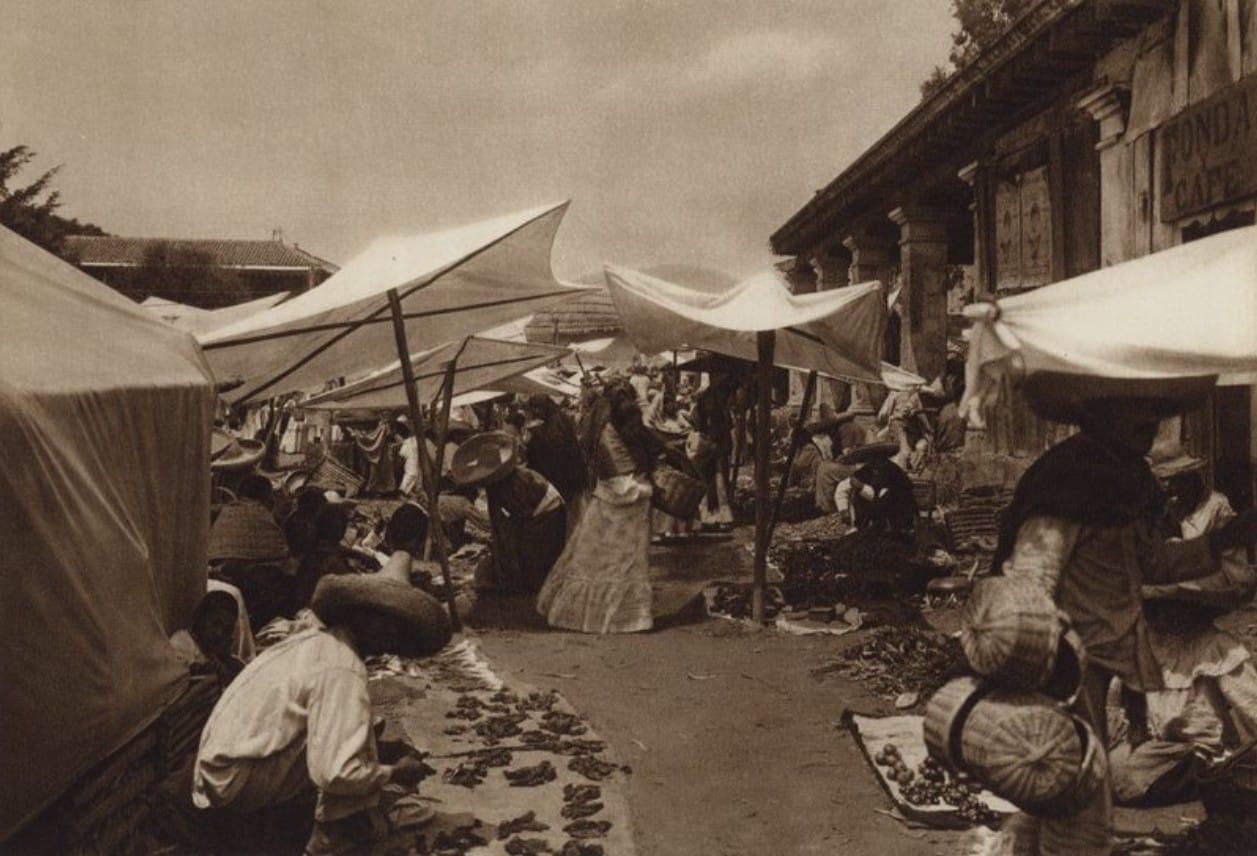
This scale is not just about quantity; it’s about reach. A single post can travel across continents in seconds. For artists, this means exposure to audiences they could never have reached through galleries or magazines alone. For audiences, it means access to a diversity of voices that would once have been hidden.
Personalisation and Accessibility
Traditional curation is one‑size‑fits‑all. An exhibition is designed for a general audience, not for you personally. Algorithms, by contrast, adapt to individual taste. If you linger on black‑and‑white street photography, your feed will show you more of it. If you prefer conceptual composites, the algorithm will oblige.
This personalisation makes art more accessible. People who might never set foot in a gallery can still encounter photography that resonates with them. For some, the algorithm is their first real exposure to photographic art. In this sense, it functions as a curator of taste, guiding people towards work they didn’t know they liked.
Discovery and Serendipity
One of the strongest arguments in favour of algorithms is their ability to generate serendipity. TikTok’s “For You” page, for example, doesn’t just show you content from people you follow; it actively introduces you to new creators. This has propelled unknown photographers and videographers to global recognition almost overnight.
The effect can be exhilarating. You open your feed expecting the familiar, and instead you stumble across something entirely new. That sense of discovery—once the preserve of galleries and bookshops—is now available on your phone.
Empowering Artists Outside the Canon
Algorithms have also helped diversify the photographic landscape. Traditional institutions have often been criticised for privileging Western, male, and established voices. Online platforms, by contrast, have amplified artists from underrepresented backgrounds. While bias still exists, the barrier to entry is lower. You don’t need a gallery connection; you need an image that resonates.
This has allowed new genres to flourish. Street photographers in Mumbai, portraitists in Lagos, and experimental artists in São Paulo have all found global audiences through algorithmic feeds. The result is a more pluralistic visual culture, one less dominated by a narrow canon.
A New Kind of Curation
Defenders of algorithms argue that we need to expand our definition of curation. If we think of curation as the act of selecting and arranging works for an audience, then algorithms qualify. They select (based on data) and they arrange (in the feed). They may not interpret in the traditional sense, but they do shape experience.
Some even suggest that algorithms are better curators than humans in certain respects. They are faster, more responsive, and less bound by institutional bias. They don’t care about an artist’s CV or gallery representation; they care about whether people engage with the work.
The Case for Optimism
It’s easy to be cynical about algorithms, but there is a case for optimism. They have expanded access, diversified voices, and created new opportunities for discovery. They have given artists tools to reach audiences directly, without waiting for institutional approval. And they have introduced millions of people to photographic art who might otherwise never have encountered it.
Of course, this is not the whole story. Algorithms also have serious drawbacks, which we’ll explore in the next section. But before we turn to the criticisms, it’s worth acknowledging what they have achieved. For many artists and audiences, the algorithm is not an enemy but an ally—a curator of a new kind, imperfect but powerful.
The Case Against the Algorithm as Curator
If the case for algorithms as curators rests on access, reach, and discovery, the case against them rests on opacity, distortion, and the erosion of meaning. For every artist who has found an audience through the feed, there is another who feels their work has been buried, reshaped, or misunderstood by the very system that claims to connect them with the world.
The Black Box Problem
Perhaps the most common criticism is that algorithms are opaque. No one outside the companies that design them truly knows how they work. Even within those companies, engineers often admit that the systems are so complex that their behaviour can’t always be predicted. For artists, this creates a sense of powerlessness. A curator in a gallery can at least explain their choices; an algorithm cannot.
This lack of transparency matters because visibility is power. If your work is surfaced, you gain an audience; if it is buried, you may as well not exist. Yet the criteria for these decisions are hidden. Artists are left guessing: should they post at a certain time, use certain hashtags, or adjust their style to fit the algorithm’s preferences? The result is a culture of speculation and anxiety.
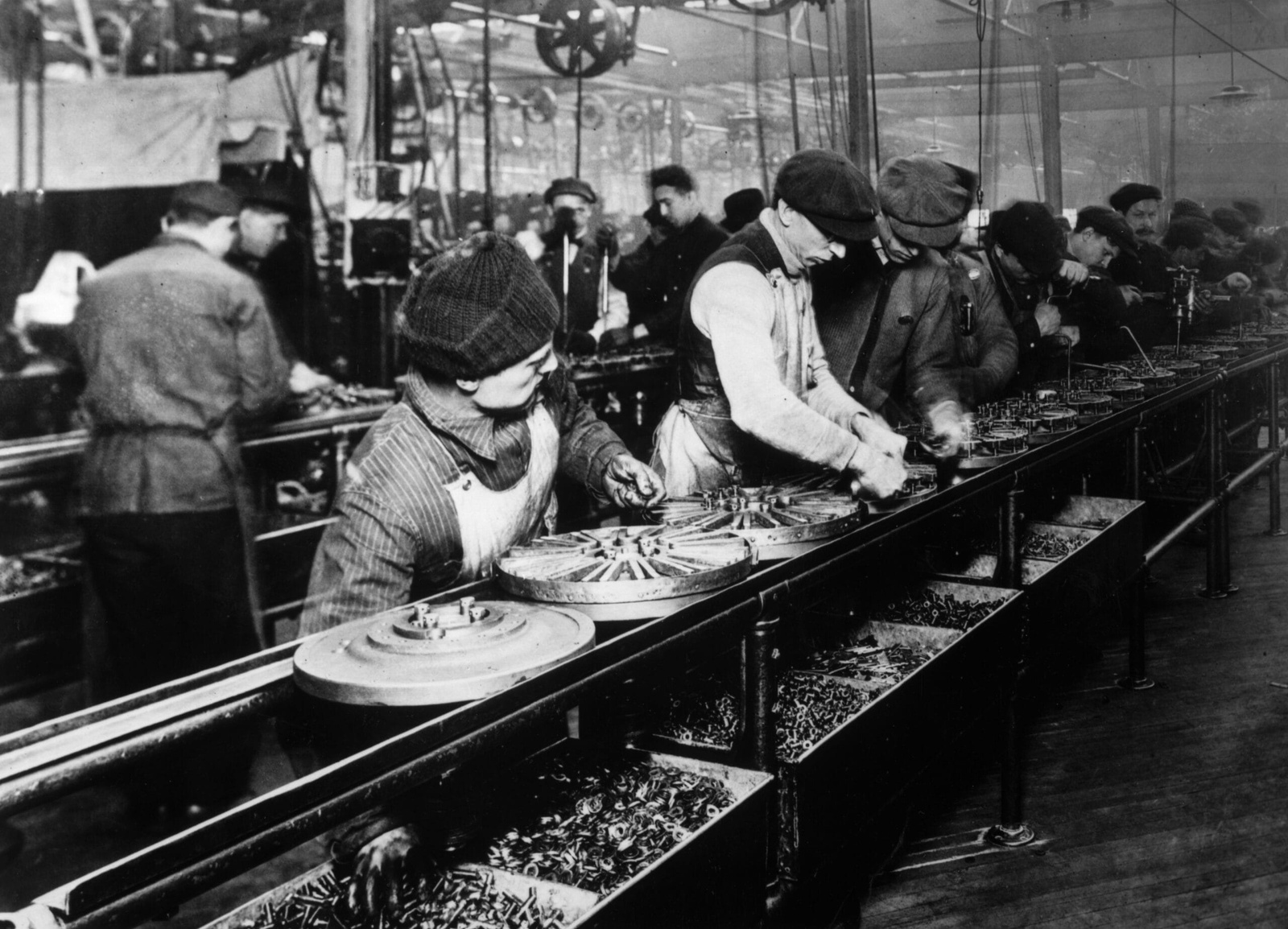
Homogenisation of Aesthetics
Another major concern is homogenisation. Algorithms reward what performs well, and what performs well tends to be what is immediately striking. Bright colours, human faces, and easily digestible compositions are more likely to attract likes and shares. Subtle, complex, or slow‑burning work often struggles.
The effect is a narrowing of artistic expression. Photographers may feel pressured to adapt their practice to suit the feed, producing work that is optimised for engagement rather than for meaning. Over time, this can lead to a kind of visual monoculture, where everything starts to look the same. The irony is that a system designed to personalise experience can end up flattening diversity.
Commercial Bias
It is also worth remembering that algorithms are not designed to promote art for art’s sake. They are designed to maximise engagement, which in turn drives advertising revenue. This commercial bias shapes what we see. Content that keeps us scrolling is prioritised, regardless of its artistic merit.
This raises uncomfortable questions. If an algorithm promotes a photograph, is it because the image has cultural value, or because it keeps users on the platform a little longer? In traditional curation, decisions are at least framed in terms of artistic or cultural significance. In algorithmic curation, the metric is attention. That shift has profound implications for how we value art.
Psychological Impact on Artists
The pressure to “please the feed” can take a psychological toll. Many artists report feeling trapped in a cycle of chasing likes and views, adjusting their work to fit the algorithm’s demands. This can lead to burnout, self‑censorship, and a loss of creative integrity.
The problem is not just external but internal. When success is measured in metrics, it becomes difficult to separate artistic value from algorithmic approval. A photograph that receives little engagement may be dismissed as a failure, even if it is meaningful or innovative. Conversely, a photograph that goes viral may be celebrated, even if it is derivative or shallow. The algorithm becomes not just a curator but a judge, shaping how artists value their own work.
Echo Chambers and Narrowed Horizons
For audiences, algorithmic feeds can create echo chambers. Because the system is designed to show you more of what you already like, it can limit exposure to unfamiliar or challenging work. This is not unique to art; it is a broader problem of social media. But in the context of photography, it means that audiences may see a narrower slice of the medium than they would in a gallery or bookshop.
Research supports this concern. A 2020 report by the Pew Research Center found that algorithmic feeds can reinforce existing preferences and reduce exposure to diverse perspectives (Science Direct). In other words, the very systems that promise discovery may actually limit it.
The Loss of Context
Traditional curation provides context. A photograph is shown alongside others, accompanied by captions, essays, or wall texts that guide interpretation. Algorithms, by contrast, strip images of context. A photograph appears in a feed, sandwiched between a meme and an advert, with little to anchor its meaning.
This decontextualisation can distort how work is received. A photograph intended as part of a series may be consumed as a standalone image. A subtle commentary may be mistaken for something superficial. Without context, meaning is flattened, and the photograph becomes just another piece of content.
The Question of Responsibility
Finally, there is the question of responsibility. Curators are accountable for their choices. They can be challenged, criticised, or defended. Algorithms, by contrast, are designed by corporations whose primary responsibility is to shareholders, not to culture. When an algorithm distorts visibility or promotes harmful content, who is held accountable?
This lack of responsibility is troubling in the context of art. If algorithms are shaping our visual culture, then they are exercising curatorial power without curatorial duty. They influence what we see, but they do not care how we interpret it.
A Necessary Counterweight
Taken together, these criticisms suggest that algorithms may not deserve the title of curator at all. They lack transparency, they homogenise aesthetics, they are driven by commercial bias, they distort artistic practice, they create echo chambers, they strip away context, and they evade responsibility.
For those who hold this view, the danger is not just that algorithms are poor curators, but that we mistake their sorting for curation. To call them curators is to grant them a legitimacy they do not deserve.
The Middle Ground
So far, we’ve looked at the case for algorithms as curators and the case against. Both perspectives have weight, but neither tells the whole story. The reality is more complicated. Algorithms are neither saviours nor villains; they are tools, and like all tools, their impact depends on how they are used and understood.
Algorithms as Tools, Not Curators
One way to cut through the debate is to stop asking whether algorithms are curators and instead ask how they can be used by curators, artists, and audiences. Seen this way, algorithms are not replacements for human judgement but instruments that can extend it. They can surface work at scale, highlight patterns, and reveal connections that might otherwise go unnoticed. But interpretation, context, and meaning still require human input.
Some galleries have already begun experimenting with this hybrid model. Data can inform curatorial choices without dictating them. For example, a curator might use analytics to see which works resonate online, but then frame those works within a broader narrative that challenges or complicates audience expectations. In this sense, the algorithm becomes a collaborator rather than a competitor.
Resistance and Subversion
Artists, too, are finding ways to resist or subvert the algorithm. Some deliberately post work that is “unfriendly” to the feed—images that are slow, ambiguous, or resistant to quick consumption. Others treat the algorithm itself as a medium, creating projects that expose or play with its logic. By doing so, they reclaim agency, turning the system’s biases into material for critique.
This kind of resistance shows that artists are not passive victims of algorithmic power. They can adapt, push back, and even use the system against itself. In this way, the algorithm becomes less a curator and more a foil—something to work against, to test, to question.

When Work Resists the Feed
Not all photography is designed for instant impact. Some work asks for patience, for an unhurried look, for the kind of attention that doesn’t translate into quick likes. A good example is my own Wingèd Beasties Series; a celebration of quiet encounters with damselflies and dragonflies. These close‑up artworks treat the insects not as specimens but as luminous subjects, their thin lines and glassy wings inviting stillness rather than speed. In a feed optimised for immediacy, such work risks being overlooked. Yet in a curated context, it can breathe, offering a different rhythm of seeing.
Audiences and Agency
Audiences, too, have a role to play. It’s easy to treat the feed as a neutral stream, but in reality, every like, share, and pause is a signal that shapes what comes next. In other words, audiences co‑create the algorithmic experience. By being more deliberate—seeking out unfamiliar voices, following artists outside their comfort zone—viewers can broaden their own horizons and push the algorithm in new directions.
This raises an important point: algorithms are not autonomous. They are feedback loops, shaped by human behaviour. If we want them to act differently, we need to act differently ourselves.
Reframing the Question
Perhaps the most productive way forward is to reframe the question. Instead of asking whether algorithms are curators, we might ask: what kind of cultural role do they play, and how should we respond? If we think of them as mirrors, they reflect our collective preferences back at us. If we think of them as filters, they shape what we see by narrowing the field. If we think of them as gatekeepers, they control access to visibility.
Each metaphor has its uses, but none is complete. The truth is that algorithms are all of these things at once. They reflect, filter, and gatekeep. They amplify some voices and silence others. They create opportunities and impose constraints. To call them curators is to simplify a more complex reality.
Towards a Shared Responsibility
What emerges from this middle ground is a sense of shared responsibility. Algorithms are powerful, but they are not destiny. Artists can choose how to engage with them. Curators can choose how to integrate or resist them. Audiences can choose how to interact with them. Platforms, too, can choose how transparent and accountable they want to be.
The danger lies not in the existence of algorithms but in our tendency to treat them as neutral or inevitable. By recognising their influence and taking responsibility for how we use them, we can begin to shape a healthier relationship between technology and art.
Philosophical & Ethical Questions
By now it should be clear that algorithms are not neutral tools. They shape what we see, how we value it, and even how artists create. But beyond the practical arguments for and against, there are deeper philosophical and ethical questions that deserve attention. These questions don’t have easy answers, but they frame the stakes of the debate in ways that go beyond convenience or frustration.
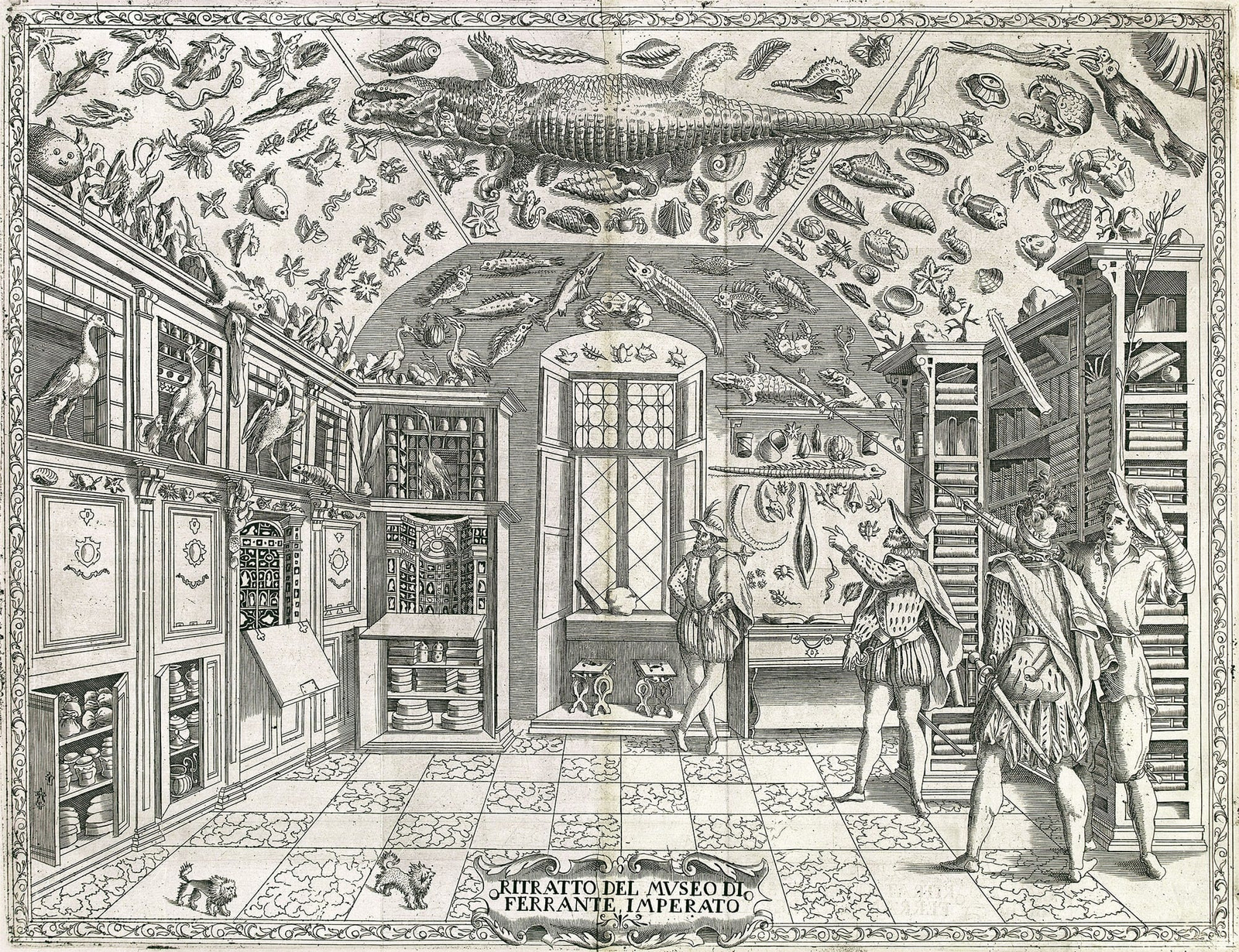
What Counts as Curation?
At the heart of the matter is the definition of curation itself. If curation is simply the act of selecting and arranging works for an audience, then algorithms qualify. They select (based on data) and they arrange (in the feed). But if curation also requires interpretation, care, and responsibility, then algorithms fall short.
This raises a broader question: are we willing to dilute the meaning of “curation” in order to apply it to machines? If so, we risk losing sight of the human qualities—judgement, empathy, narrative—that have traditionally defined the role. If not, then we need a new word for what algorithms do.
Authorship and Agency
Another question concerns authorship. If visibility is determined by code, who is shaping culture—the artist, the audience, or the platform? When an algorithm decides which photographs are seen, it exerts a kind of authorship over cultural experience. The artist creates the work, but the algorithm decides whether it enters the conversation.
This complicates traditional ideas of agency. In the past, artists could at least appeal to curators, critics, or editors. Today, they are appealing to a system that cannot be reasoned with. The algorithm doesn’t listen; it calculates. Does this mean that authorship is being diluted, shared between human creators and non‑human systems? Or does it mean that authorship is being undermined altogether?
Taste Without Intention
Taste has always been central to curation. A curator’s taste reflects their training, their influences, and their worldview. It can be challenged, debated, and defended. Algorithms, by contrast, have no taste in the human sense. They don’t prefer one aesthetic over another; they simply amplify what generates engagement.
Yet the effect can look like taste. A feed dominated by pastel tones or moody portraits can feel as if someone has chosen them deliberately. But this is an illusion. The algorithm is not expressing preference; it is reflecting patterns of behaviour. This raises an unsettling question: is taste still meaningful if it can be simulated without intention?
Responsibility and Accountability
Ethics also come into play. Curators are accountable for their choices. They can be criticised, challenged, or even dismissed. Algorithms, however, are designed by corporations whose primary responsibility is to profit. When an algorithm distorts visibility, promotes harmful content, or narrows cultural horizons, who is responsible? The engineer who wrote the code? The company that deployed it? Or the users whose behaviour feeds it?
This lack of accountability is troubling. If algorithms are shaping our visual culture, then they are exercising curatorial power without curatorial duty. They influence what we see, but they do not care how we interpret it.
The Value of Silence
Another philosophical question concerns silence. In traditional curation, silence can be powerful. A curator might choose not to explain a work, leaving space for ambiguity. Algorithms, by contrast, never leave silence. They fill every gap with more content, more recommendations, more noise.
This raises the question of whether there is still room for art that resists explanation, that refuses to be optimised, that insists on being difficult. Can such work survive in a system that rewards immediacy and punishes ambiguity?
The Future of Cultural Memory
Finally, there is the question of cultural memory. Museums and galleries preserve works for future generations. Algorithms, by contrast, are designed for the present moment. They prioritise what is trending, not what is enduring. This raises concerns about what kind of cultural record we are creating. If visibility is determined by engagement, will future generations inherit a distorted picture of our visual culture—one dominated by what was popular rather than what was significant?
A Space for Reflection
These philosophical and ethical questions don’t yield simple answers, but they remind us that the debate is not just about convenience or frustration. It is about meaning, authorship, taste, responsibility, silence, and memory.
Whether we call algorithms curators or not, they are shaping the way photographic art is seen and valued. The challenge is to decide how we want to respond: with acceptance, resistance, or something in between.
Conclusion
So, is the algorithm a curator? After all this, the honest answer is: it depends on what we mean by curation. If we strip the word down to its bare bones—selection and arrangement—then yes, algorithms qualify. They select images, they arrange them in a feed, and they deliver them to an audience. In that sense, they are curators of a new kind, operating at a scale no human could match.
But if we hold onto the richer meaning of curation—care, context, interpretation, responsibility—then algorithms fall short. They don’t tell stories, they don’t provide context, and they don’t take responsibility for the cultural impact of their choices. They are powerful, but they are blind.
What we are left with is a paradox. Algorithms have democratised access to photographic art, giving visibility to voices that might otherwise have been ignored. At the same time, they have narrowed the field, privileging certain aesthetics and metrics over others. They have created opportunities, but also pressures. They have expanded horizons, but also built echo chambers.
Perhaps the real danger is not that algorithms curate, but that we mistake their sorting for curation. When we scroll through a feed that feels deliberate, it is tempting to imagine intention behind it. But the intention is not cultural; it is commercial. The algorithm is not trying to tell us a story; it is trying to keep us engaged. If we forget that, we risk confusing engagement with meaning, visibility with value.
That doesn’t mean we should reject algorithms outright. They are here to stay, and they can be useful tools. Artists can use them to reach audiences, curators can use them to inform decisions, and audiences can use them to discover new work. But we should approach them with caution, recognising both their power and their limits.
The responsibility, then, is shared. Artists can choose whether to adapt, resist, or subvert. Curators can choose whether to integrate or challenge. Audiences can choose whether to passively consume or actively seek out. And platforms can choose whether to prioritise transparency and accountability over pure engagement.
In the end, the algorithm is not a curator in the traditional sense. It is something else: a filter, a mirror, a gatekeeper, a collaborator, a foil. It is all of these things at once, and none of them completely. To call it a curator is to simplify a more complex reality.
So perhaps the better question is not is the algorithm a curator? but what kind of cultural role do we want it to play? That is a question we can’t leave to the machines. It is a question for artists, curators, audiences, and institutions alike.
And maybe that’s the point. The algorithm is not the end of curation, but the beginning of a new conversation about how we see, what we value, and who gets to decide.




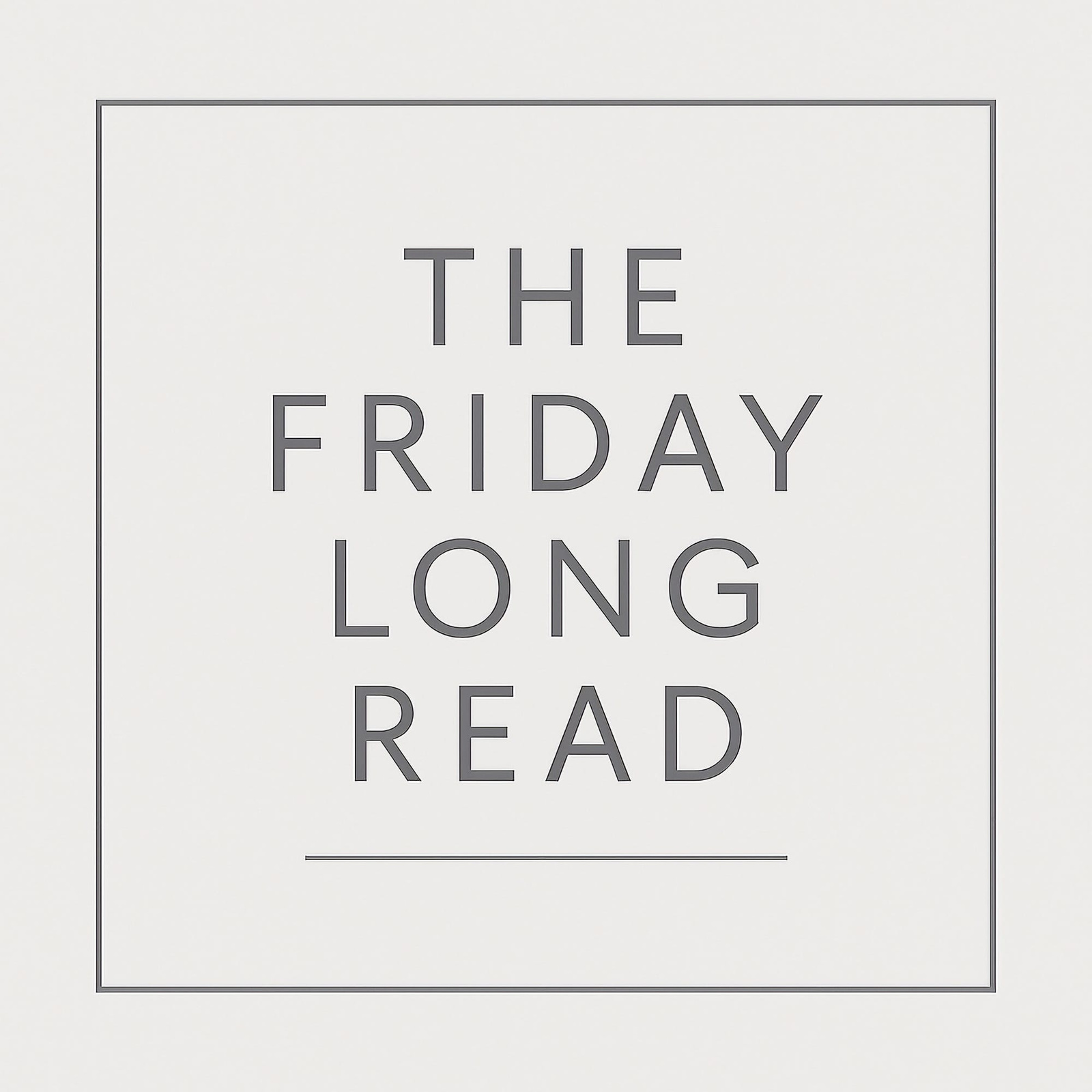

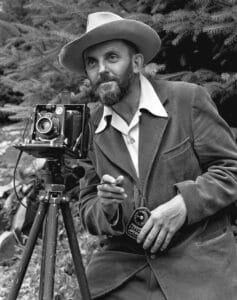

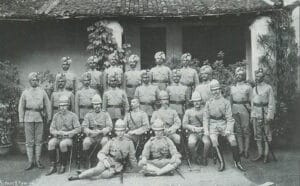
One Comment
Reading this, I can’t help but wonder: do you think algorithms can ever truly curate with the same sense of care and intention as a human, or will they always be limited by their reliance on metrics and data?